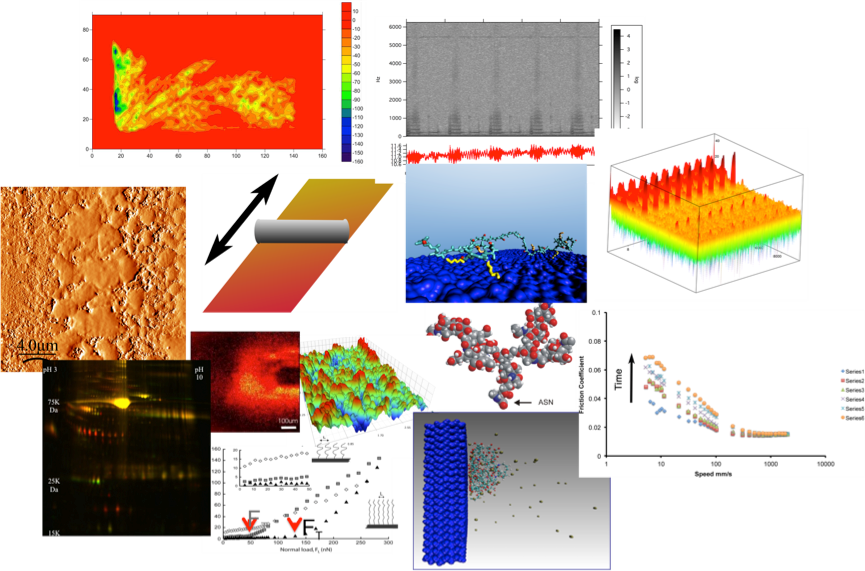Research & Projects
Both applied and fundamental research projects are carried out in the tribology group. The focus of many projects has been on investigating the influence of adsorbed molecules on friction and wear. This has involved measuring the tribological properties under a variety of conditions and examining the chemistry at the surface.
In order to provide wear protection or reduce friction, additives have to adsorb onto or interact with the surface. While friction can often be controlled by adsorbing the right molecules, wear protection generally requires that the additive reacts at the surface to form a protective layer. XPS and ToF-SIMS can be used to probe the adsorption of additives onto the surfaces in liquid-lubricated contacts. These techniques can also be used to identify reactions that take place during sliding and distinguish these from thermally activated reactions.
As well as experimental methods, computer modelling can also be used to investigate the adsorption of molecules and polymers onto surfaces. This can provide an additional insight that would not be accessible through laboratory experiments. Visualizing how the molecule adsorbs onto the surface strengthens the interpretation of experimental results and provides additional information on the mechanisms of friction control. In particular, modeling allows the chemical forces involved in adsorption to be identified and quantified, thus assisting in the design of low friction additives. Finite element modelling is used to examine the pressure distribution and its effect on wear in artificial joints.

Applied research focuses on the tribological properties of new materials and coatings. Such projects rely heavily on the meaningful measurement of friction and wear on the laboratory scale. This is assisted by using different techniques that allow varying geometries and conditions to be tested. In addition, vibrations are recorded during the measurement of high friction materials, allowing a more extensive characterization of the tribological properties before field tests are carried out.

-
Share
